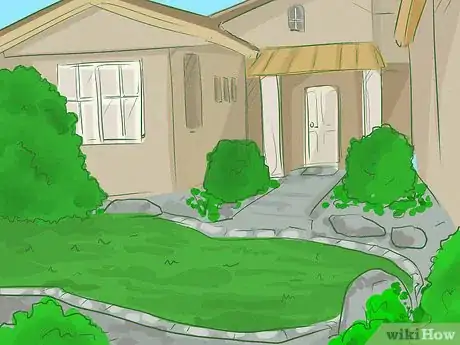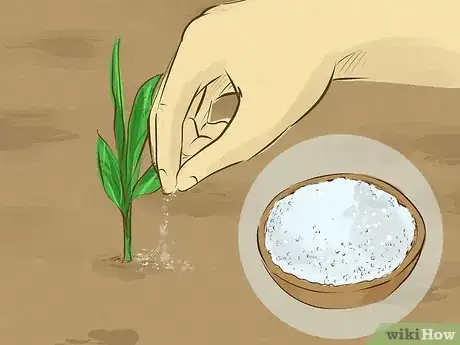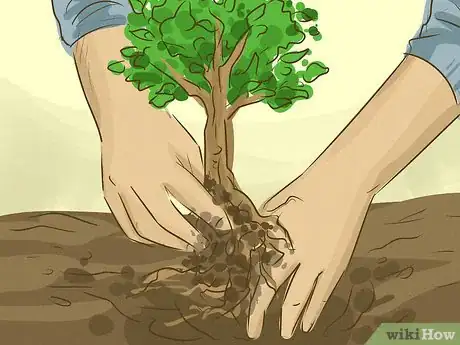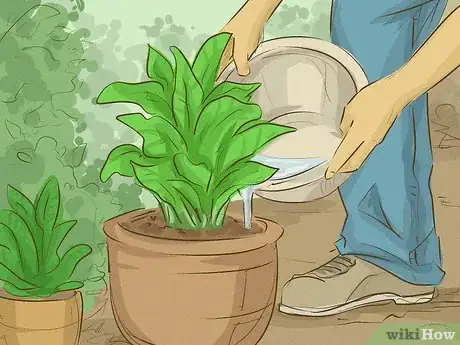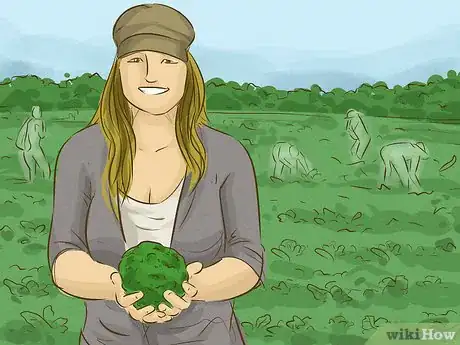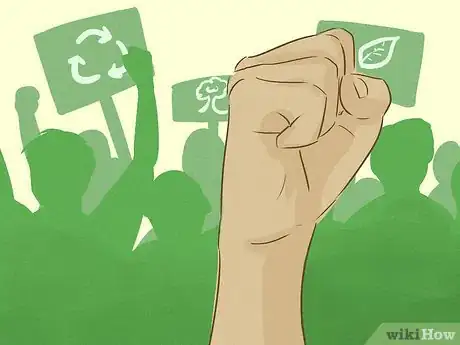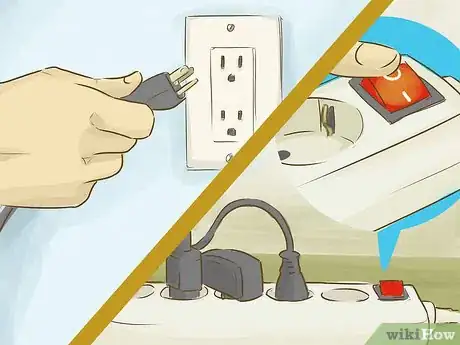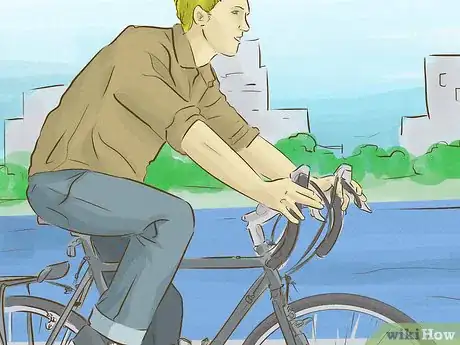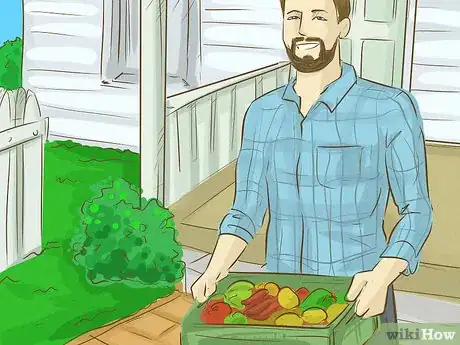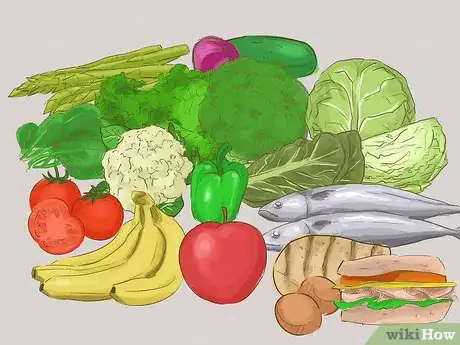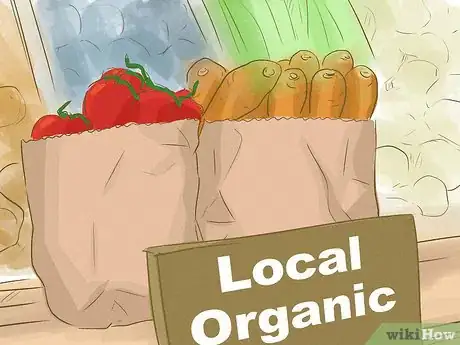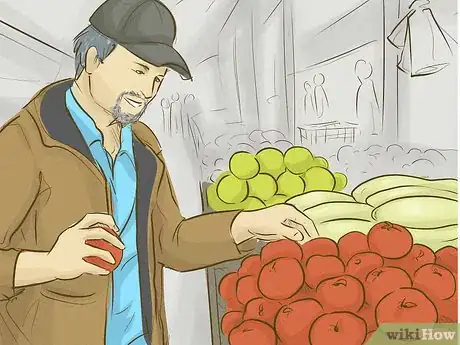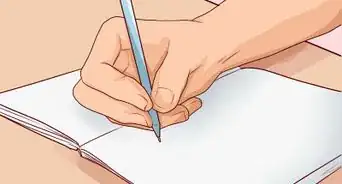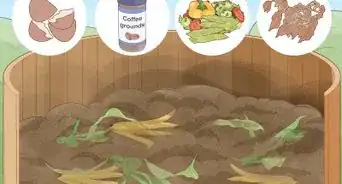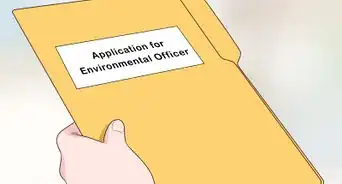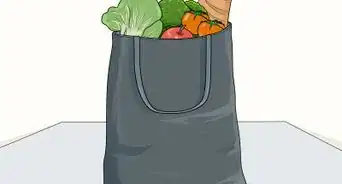This article was co-authored by Bess Ruff, MA. Bess Ruff is a Geography PhD student at Florida State University. She received her MA in Environmental Science and Management from the University of California, Santa Barbara in 2016. She has conducted survey work for marine spatial planning projects in the Caribbean and provided research support as a graduate fellow for the Sustainable Fisheries Group.
There are 16 references cited in this article, which can be found at the bottom of the page.
This article has been viewed 133,033 times.
Being concerned about the environment can feel overwhelming, but there are actions that you can take to help preserve the natural world. Start by finding ways to protect the landbase and waterways in your own community and neighborhood. It's also important to reduce your own carbon footprint and make sustainable eating choices. You can maximize your actions by raising awareness of local environmental challenges among your friends and family, or joining with other activists to push for policies that protect nature.
Steps
Conserving Your Local Environment
-
1Stop mowing your lawn. The grasses and weeds will go to seed, and offer haven for insects and birds. Wildflowers will bloom, providing nourishment for bees. When you maintain a standard grass lawn, you’re depriving these creatures of their natural environment.[1]
- You might wish to set aside part of your lawn to leave unmown, or you might decide to mow paths through longer grassy areas.
- Be prepared to share your reasons with your neighbors, who might at first not realize the benefits of long grass.
-
2Participate in beach or river cleanup. When people litter, their trash often makes its way to our local waterways, destroying the natural homesites of birds, fish and other wetland creatures. Help out by joining with others in beach or riverside cleanup events.[2]
- If there’s not a cleanup in your area, consider creating one. All you’ll need are trash bags, rubber gloves, and a team of like-minded volunteers.
- You can select any lake, river, creek, swamp, marsh, beach, or wetland you prefer to help clean.
Advertisement -
3Stop using pesticides. Rather than spraying toxic pesticides that are dangerous to humans, pets, fish and birds, alter the garden environment in a way that causes the pests to leave. This is a more environmentally friendly solution.[3]
- Try using beneficial insects that can control the pest population, or natural pesticides which have been developed to make the plant taste bad to the pest. You can find these at your local garden store or online.[4]
- Pesticides include insecticides, herbicides, biocides, fungicides, and nematicides.
-
4Plant native trees and shrubs. By planting trees and shrubs that are native to your area, you’ll be working with the local ecosystem rather than against it. Check with your local nursery, or with your state’s cooperative extension agency, to learn more about the particular varieties of native plants that might thrive on your property.
- Planting native plants helps with water conservation. Once established, little or no irrigation should be needed for most well-placed native plants.
- You’ll be increasing the local biodiversity, establishing native pollinator and songbird habitats in your yard.
-
5Catch your rainwater. A ½ inch of rain on a 1000 sq. foot roof produces about 280 gallons of water that you can then use to irrigate your garden and clean items around your home. Most people use a rain barrel to save their rainwater until it’s used for irrigation. You can put a rain barrel directly beneath your gutter, or you can install a diverter that pulls water from your water drainage system.[5]
- Rainwater isn’t safe for drinking; it should only be used for irrigation and cleaning purposes.
- Saving your rainwater helps protect nature by preventing stormwater runoff from carrying trash, nutrients, and other pollution to your local lakes and streams.
-
6Plant flowers that bees will like. Small, diverse plantings that bloom for multiple seasons will help support your local bee population. There are many reasons that bees are vital to your local ecosystem, including pollination of fruit trees and food crops.[6]
- Examples of favorites among bees include borage, cleome, cosmos, “bee-balm” or monarda, verbena and zinnia.
- Herbs that bees frequent include rosemary, thyme, mint, basil, and all kinds of sage or salvia.
-
7Feed birds and squirrels. Feeding animals attracts them to your yard, so they can gain habitat in your yard.
- Don't squirrel-proof your birdfeeders, as this is cruel to squirrels.
- If you want to keep squirrels away from birdfeeder, feed them in a separate squirrel feeder on a different tree or fence away from the tree with the birdfeeders.
- Don't feed the animals on a patio or other manmade structure that is far from a tree, as that is unnatural.
- You can make your own bird and squirrel feeders to make an even bigger change because you are making pollution into usable items!
Joining With Others
-
1Join an environmental activist organization. You can maximize the impact of your action by joining together with others who want to preserve nature. Being a part of an activist organization will help you keep abreast of any environmental legislation, or changes in legal threats to natural environments.[7]
- Be aware that there are organizations with environmental-sounding names that actually work to dismantle legal protections for natural space. Research the organization thoroughly before getting involved with any action.
- For example, The Center for Whale Research does research on Orca whales in the Pacific Northwest, but the Institute for Cetacean Research is a front group for Japanese whaling operations.
-
2Spend time volunteering. Most communities have nonprofit environmental organizations that rely on volunteer help in order to do their work. Look in your local area for organizations that are doing the kind of work to preserve nature that you expect.[8]
- Internships and international opportunities are also available to those who are able to travel.
- You might find that your volunteer work leads to new actions and opportunities. Even if it starts with stapling flyers or doing data entry, your actions will help support the protection of the environment.
-
3Raise awareness of threats to nature. Make sure you share news about the threats to the environment, both inside and outside your community. Follow social media campaigns, and share their posts. Write letters to local newspapers and community blogs. Consider joining in with rallies and protest marches if you’re able.
- Connect with other activists on social media.
- Share information through videos, photographs, and facts. Create online polls that are quick to share with friends to collect information.
-
4Sign or create a petition in response to a particular threat. While research is unclear on the legislative impacts of signing a petition, petitions often serve to raise awareness of particular issues and to draw interest. There are a variety of online organizations that make it very easy to create and share your own petition.[9]
- It might help to know that research shows that people who sign online petitions are actually more likely than those who sign paper petitions to follow up with other forms of activism.[10]
- Follow up your petition with real-life action, such as calls to lawmakers, organize a march, and talk to your friends about doing the same.
Reducing Your Carbon Footprint
-
1Conserve water in your home. Wait until you’ve got a full load of clothes before running the washing machine. Don’t turn on the dishwasher until it’s full, and allow your dishes to air dry rather than automatically drying.[11] By minimizing the amount of drinkable water you use for other purposes, you’re helping to protect your local water resources which are jeopardized in many areas.
- Taking shorter showers, or turning off the water while you lather up, will save water and money. Set a timer if you need to.
- Use water-conserving faucets, showerheads and toilets. Turn the faucet off while you brush your teeth or shave.
-
2Turn off unnecessary lights. When you leave a room, make sure the lights are off. Having lights set on a timer may help you reduce the time they’re left on. If you use lights outdoors, make sure they’re motion-sensitive so that they don’t get left on.[12]
- Use natural lighting whenever possible, and consider installing skylights or light tunnels to light darker areas of the house.
- Switch to energy-efficient lightbulbs. Using less electricity translates to fewer greenhouse gases being discharged into the environment from your energy company.
- Unplug chargers when they’re not in use. Chargers for your electronic devices are constant energy users, even when your device is unplugged. Reducing your electricity usage benefits the environment and can save you money.
-
3Use biodegradable cleaning products. Remember that whatever goes down your drains will eventually end up in your local streams and creeks. Using biodegradable, or biocompatible, products will have less impact on the local wildlife.
- Usually biodegradable products will list this information on their labels. Look for this designation.
- Avoid ingredients that are “antibacterial” or “antibiotic” as the ingredients in these can negatively impact the environment.
- Also avoid scented products, bleach, boron/borax, chlorine bleach, or ingredients with the word sodium in them, such as sodium hypochlorite.
-
4Consider your transportation options. Before you fly, consider the option of driving. If you can drive, consider carpooling, or taking a train or public transportation. If you’re in the habit of driving or flying, you may be using unnecessary fossil fuels and negatively impacting the environment.[13]
- If you’re going to fly, try to fly non-stop, as this will use less fuel.
- Consider walking anyplace less than a mile away. Try biking to nearby destinations. Look into telecommuting into work occasionally to conserve energy.
-
5Reduce the carbon footprint of your home. Conserve energy in your home by providing weatherstripping and caulking all windows as well as insulating your ceilings and floors. Purchase appliances that are energy-efficient; look for the “energy-star” designation.[14]
- Use a programmable thermostat to conserve energy when you’re less active.
- Make sure your heating and cooling systems are well-maintained and operating efficiently.
Choosing to Eat Sustainably
-
1Make sure the food you’re eating is grown sustainably. Eating sustainably means eating foods that support both your own good health and the sustainability of the environment. If you’re eating seafood, make sure that it’s not at risk of being overfished, or farmed in a way that’s damaging the environment.[15]
- Try to buy from local growers whenever possible. Local farmers are usually invested in employing sustainable farm practices.
- Read the labels on your food products. If you don’t recognize more than ⅓ of the words found there, look for something less processed.
-
2Eat lower on the food chain. This means eat less beef, which is higher on the food chain, and more roots, vegetables, and fruits. Smaller fish, such as anchovies, are usually better to eat than larger fish, such as tuna, which are higher up the food chain and typically higher in mercury. Plant-based foods require still less energy to produce. Shifting to a more plant-based style of eating will slow the deforestation that domestic meat production requires.[16]
- Healthy diet guidelines encourage at least 50% of your daily diet consist of fruits and vegetables.
- If you do eat meat, treat it as a condiment rather than a main dish. Be aware that factory-farmed meat is produced in ways that contribute to greenhouse gases and environmental degradation. Learn to hunt deer for a more natural meat source.
-
3Look for food that’s grown locally. You’ll avoid the energy required to transport products from far away. In addition, getting to know your local food producers will help you understand how your food was grown and harvested.[17]
-
4Buy from trusted retailers. Many international food growers use unregulated or under-regulated environmental practices. American grown products, while not always perfect, are usually farmed with more sustainable practices. Take the time to research products you purchase regularly.[20]
- Good retailers will be well-informed on the way their sellers practice sustainability.
- Knowing more about your farmers and food sources through your retailers can help support local business, which are invested in protecting and preserving the environment.
Community Q&A
-
QuestionI have to mow my lawn because of the HOA, and my mom can't afford to not mow it. What should I do?
 Community AnswerYou can find other ways to take action, such as growing your own garden or biking or walking instead of driving.
Community AnswerYou can find other ways to take action, such as growing your own garden or biking or walking instead of driving. -
QuestionWhat is the greenhouse effect?
 Community AnswerCarbon monoxide and other gases in the atmosphere trap the sun's heat, preventing it from escaping. This causes the planet's temperature to rise, which leads to other issues like polar icecaps melting.
Community AnswerCarbon monoxide and other gases in the atmosphere trap the sun's heat, preventing it from escaping. This causes the planet's temperature to rise, which leads to other issues like polar icecaps melting. -
QuestionHow do I aid in conserving tropical rain forests?
 SapphiaCommunity AnswerYou can donate money to conservation organizations such as the Rainforest Trust, reduce paper and wood consumption, and/or become involved with a local organization that advocates and works with conserving tropical rain forests.
SapphiaCommunity AnswerYou can donate money to conservation organizations such as the Rainforest Trust, reduce paper and wood consumption, and/or become involved with a local organization that advocates and works with conserving tropical rain forests.
References
- ↑ https://ww2.rspb.org.uk/makeahomeforwildlife/givenatureahomeinyourgarden/gardenactivities/giveyourmowerarest/
- ↑ http://www.dnr.sc.gov/bsrs/
- ↑ https://sciencebasedmedicine.org/pesticides-just-how-bad-are-they/
- ↑ https://www.globalhealingcenter.com/natural-health/organic-pesticides/
- ↑ http://extension.usu.edu/waterquality/urbanstormwater/rain-water-harvesting/
- ↑ http://articles.extension.org/pages/19581/conserving-pollinators:-a-primer-for-gardeners
- ↑ http://www.motherjones.com/environment/2006/03/guide-environmental-non-profits
- ↑ https://www.bowdoin.edu/international/student-engagement/nonprofit.shtml
- ↑ http://www.huffingtonpost.ca/craig-and-marc-kielburger/online-petitions-slacktivism_b_4144135.html
- ↑ https://www.nytimes.com/2016/12/28/us/online-petitions-activism.html
- ↑ https://www.nature.org/ourinitiatives/urgentissues/water/how-you-can-help/index.htm
- ↑ https://www.nature.org/ourinitiatives/urgentissues/water/how-you-can-help/index.htm
- ↑ https://www.carbonfund.org/reduce
- ↑ https://www.carbonfund.org/reduce
- ↑ http://www.seafoodwatch.org/seafood-recommendations
- ↑ http://www.hsph.harvard.edu/nutritionsource/2015/06/17/5-tips-for-sustainable-eating/#ref2
- ↑ http://www.hsph.harvard.edu/nutritionsource/2015/06/17/5-tips-for-sustainable-eating/#ref2
- ↑ http://www.nrdc.org/oceans/seafoodguide/
- ↑ http://fma.alabama.gov/BuyLocal.aspx
- ↑ http://www.nrdc.org/oceans/seafoodguide/
About This Article
If you'd like to take action in order to preserve nature, try to reduce the amount of water you use by turning the faucet off while you brush your teeth or shave. You can also take shorter showers and only run your washing machine when it has a full load of clothes. Additionally, try to eat a diet consisting of at least 50% fruits and vegetables a day and reduce your meat consumption, since mass meat production can have harmful effects on the environment. Then, try to buy locally grown food, since local growers are more likely to use sustainable farming practices. For more tips from our Environmental co-author, like how to take action to preserve nature through activism, read on!
